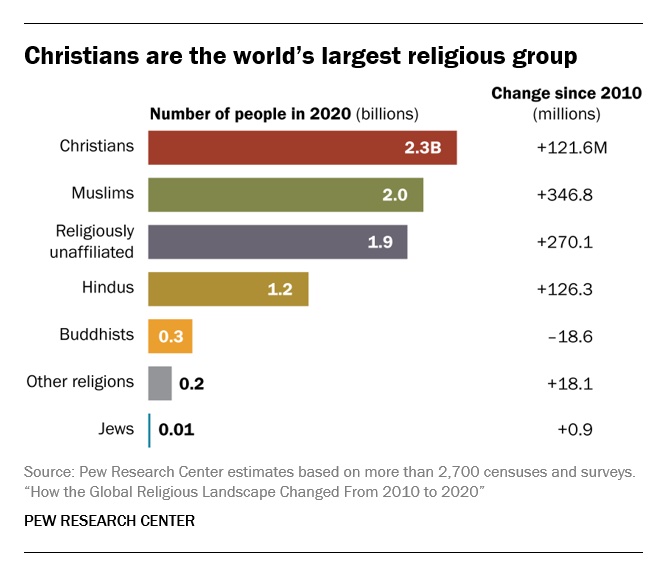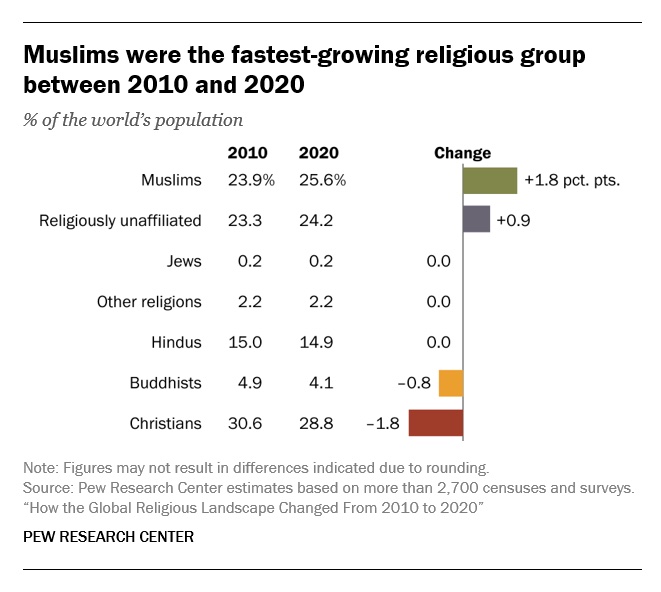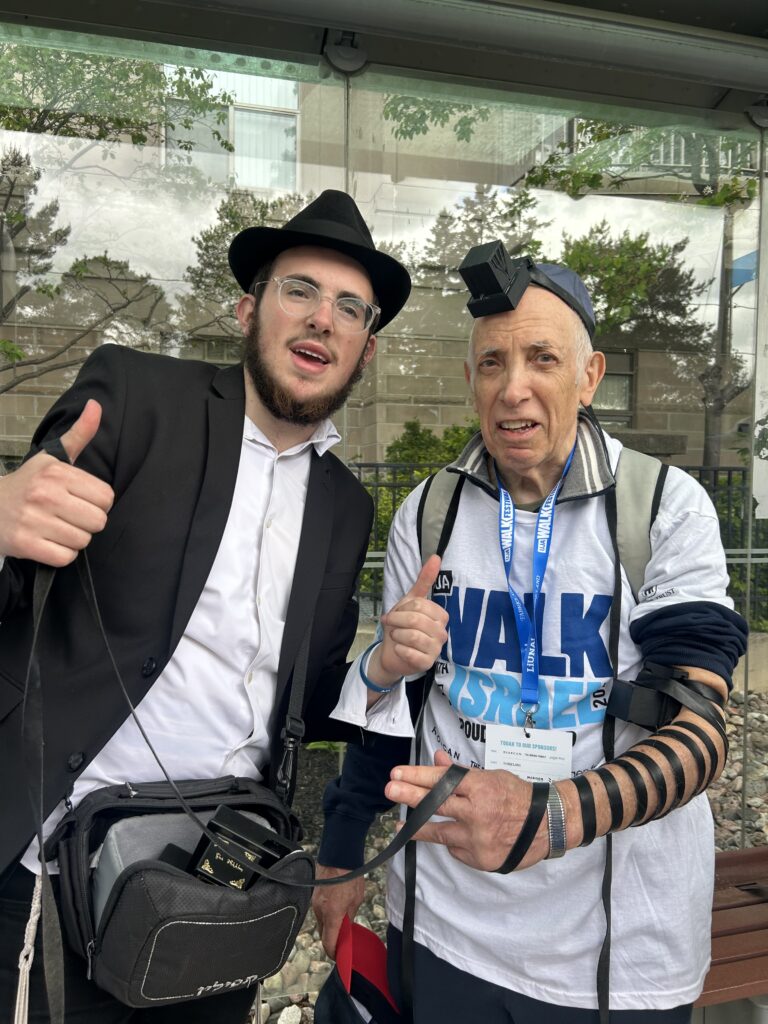Uncategorized
Bosnian Jews mourn Moris Albahari, one of Sarajevo’s last Ladino speakers
(JTA) — Moris Albahari, a Holocaust survivor, former partisan fighter and one of the last Ladino speakers in Bosnia and Herzegovina’s dwindling Jewish community, passed away at the age of 93 last month.
It is believed that he was one of four native Ladino speakers remaining in a country where the Judeo-Spanish language once flourished and was spoken by luminaries like Flory Jagoda, the grande dame of Ladino song, and Laura Bohoretta, the founder of a uniquely Sephardic feminist movement in Bosnia.
Bosnia’s small Jewish community — with barely 900 members throughout the country, 500 of whom live in Sarajevo — are mourning the loss of a living link to communal memory as well as a dear friend.
“From you, uncle Moco, I learned a lot about Judaism, about life, about nature and especially about people. About both the good and the evil,” Igor Kožemjakin, the cantor of the Sarajevo Jewish community, wrote in a memorial post on Facebook, referring to Moris as “Čika,” or uncle, a term of endearment in Bosnian.
“It is a terrible loss, especially for Sarajevo. Our community is very small, especially after the Holocaust,” Eliezer Papo, a Sarajevo-born Jew and scholar of Ladino language and literature at Ben-Gurion University of the Negev, told the Jewish Telegraphic Agency. “We’re not speaking just in terms of prominent members of the community, we’re speaking in terms of family members. Everyone is like a family member.”
When Albahari was growing up in the 1930s, the Jewish community of his native Sarajevo numbered over 12,000. Jews made up more than a fifth of the city and it was one of the most important centers of Jewish life in the western Balkans.
In his youth, the city was part of what was then the Kingdom of Yugoslavia. Formed out of the borderlands between the Ottoman and Austro-Hungarian empires, it was a multiethnic state composed of Croats, Serbs, Bosniaks, Slovenians, Macedonians, Hungarians, Albanians and more. Among them were many Jewish communities both Ashkenazi and Sephardic.
The unique mix of of Muslim, Jewish, Catholic and Orthodox Christian communities, with their mosques, synagogues and churches defining Sarajevo’s skyline, earned the city the nickname “Little Jerusalem.”
Speaking in a 2015 documentary made by American researchers, “Saved by Language,” Albahari explained that his family traced their roots back to Cordoba before the Spanish Inquisition, and through Venice, before settling in what would become Bosnia when it was part of the Ottoman Empire.
“We didn’t want to ‘just’ write an article about Moris or Sarajevo; we wanted [the audience] to see what we saw and hear what we heard,” Brian Kirschen, professor of Ladino at Binghamton University, who worked on the documentary with author Susanna Zaraysky, told JTA. “This resulted in a grassroots initiative to create the documentary.”
In the film, Albahari takes the researchers and their viewers on a tour through what was Jewish Sarajevo, giving glimpses of the thriving Ladino speaking community in which he was raised and explaining how ithe language would save him many times, when the Nazis and their Croat allies, the Ustaša, came to shatter it.
“In sharing your story of survival during the Holocaust, you opened doors that remained closed for decades,” Kirschen said in a memorial post on Facebook. “Some of your stories were even new to members of your family, but each survivor has their own timeline. While you experienced great pain during your life, from your story, we also learn about moments of kindness and heroism. Through your story, you also taught us about the power of language.”
Albahari wasn’t yet a teenager when, in 1941, Nazi Germany and Mussolini’s Italy invaded Yugoslavia. The Nazis occupied the eastern portion of the country, including what is now Serbia, while they raised up a Croat fascist party, known as the Ustaša, to administer the newly formed “Independent State of Croatia” — often known by its Serbo-Croatian initials, NDH — in the western regions that included the modern-day Bosnia and Herzegovina.
The Ustaša collaborated in the Nazis’ genocidal plans for Europe’s Jewish and Roma comunities, and they had genocidal designs of their own for the Orthodox Serb communities living in the NDH.
To that end they established the Jasenovac concentration camp, which would become known as the Auschwitz of the Balkans. By the war’s end it had become the third largest concentration camp in Europe, and behind its walls the overwhelming majority of Sarajevo’s Jews — at least 10,000 — were massacred. Including Serbs, Jews, Roma and political dissidents of Croat or Muslim Bosniak background, as many as 100,000 people were killed in Jasenovac.
Albahari was 11 years old when the Ustaša came to deport him and his large family to Jasenovac. A former teacher working as an Ustaša guard in the town of Drvar, where the train stopped, warned Albahari’s father, David, about their destination, and he was able to help his son escape from the train.
The teacher helped guide the young Moris to an Italian soldier named Lino Marchione who was secretly helping Jews.
This was the first case when Albahari’s Ladino came in handy. Ladino is largely based on medieval Spanish, with a mixture of Hebrew, Aramaic, Turkish and other languages mixed in. For speakers of Serbo-Croatian, a Slavic language, it’s entirely incomprehensible. But for a speaker of another Romance language such as Italian, it’s not such a stretch to understand, and Moris was able to converse with his Italian savior.
With his family gone, he was taken in by a Serb family, and changed his name to Milan Adamovic to hide his Jewish identity. Still, by 1942, it became clear that neither as Adamovic nor Albahari would he be safe in the town. So he fled to the mountains.
“If there was [a battle] I took clothes from a dead soldier to wear, I lived like a wolf in the mountains, you know. Visiting villages [asking for something] to give me for eating, it was a terrible time,” Albahari recalled in “Saved By Language.”
He would only feel safe in villages under the control of partisan forces. Yugoslavia was the only country in Europe to be liberated from Nazi rule by its own grassroots resistance.
During his time in the mountains, Albahari joined up with a partisan unit aligned with the movement of Josip Broz Tito, who would lead Communist Yugoslavia after the war. By the war’s end, Tito’s partisans numbered over 80,000 and included more than 6,000 Jews, many in prominent positions, such as Moša Pijade, who would go on to serve as vice president of the Yugoslav parliament after the war.
Moris was out on patrol as a partisan when he came upon a group of American and British paratroopers. They raised their weapons at him, thinking he was an enemy. Moris tried to communicate, but he spoke no English.
When he asked the soldiers if they spoke German or Italian, they shook their heads. When he asked about Spanish, one perked up: a Hispanic-American soldier by the name of David Garijo.
In Ladino, Alabahari was able to explain that he was not an enemy but could lead them to a nearby partisan camp where they would be safe.
“Ladino saved my life in the war,” Albahari recalled in the documentary.
At the partisan camp, Morris received even bigger news: The family that he had assumed had all perished after he left the train were in fact alive. The former school teacher and Ustaša guard who had warned his father had met them at the next train junction to help them escape. Furthermore, around half of the Jews in the train car were able to escape using the same hole Moris used during his initial escape.
Ultimately the family all survived the war, unlike so many other Jews of Sarajevo.
“Where is Samuel, where is Dudo, where is Gedala? They never came back,” Albahari lamented, listing missing neighbors while walking through Sarajevo’s old Jewish neighborhood in the documentary. “Maybe we are happy because we are alive after the Second World War, but also unlikely because every day we must cry for these dead people.”
When Moris returned to Sarajevo, it was an entirely different place from the bustling Jewish community he had once known.
Gone was the sound of Ladino in the streets and alleyways of Bascarsija, the market district where so many of Sarajevo’s Jews had once lived. Gone were the synagogues — only one of the many synagogues that had existed before WWII still functions. Gone was the robust Jewish life that was once a central part of Sarajevo.
Moris was still only 14 by the war’s end, so he returned to school and ultimately graduated at the top of his class. He became a pilot and later director of the Sarajevo Airport.
In this new world, Ladino was spoken, if at all, only in the home.
“Always, when I hear Spanish, I hear my father and mother, and all the synagogues, prayers in Ladino and rabbis who spoke Ladino. But that is in the past,” Albahari says in “Saved by Language.”
Eliezer Papo, who is a generation younger than Albahari, recalled that in his youth Ladino had long been reduced to a language of secrets.
“Mostly, Ladino was used when the elders didn’t want youngsters to understand,” Papo said.
Only later, in the 1980s, did community members realize what was being lost and begin to gather to maintain their language, recount what Jewish Sarajevo had been like and share their wartime stories of survival.
“He never took his story to the places of revenge, but he took it and his life experience to a place of ‘Never again,’ not just ‘Never again for Jews’, but never again for anybody,” said Papo.
Like many Sarajevans, World War II would not be the last major conflict Albahari would see. Less than 40 years later, war would once again come to Sarajevo with the break-up of Yugoslavia.
From 1992-1995 the city remained under constant siege by Bosnian Serb forces looking to break away from what would become Bosnia and Herzegovina. Moris joined with other Jews of Sarajevo in working to provide aid to their fellow Sarajevans during the harsh period.
Sarajevo’s synagogue was turned into a shelter and a soup kitchen. The community ran a network of underground pharmacies and a message service allowing Sarajevans to get word to family and friends outside of the city during what became the longest siege of a capital city in the history of modern warfare.
“Moris was an inspirational persona to many members of Jewish community and La Benevolencija,” Vlado Anderle, the current president of that local Jewish humanitarian organization told JTA. “He was a man with such inviting spirit and energy.”
When the dust settled on the breakup of Yugoslavia, and the new Bosnian state rose from its ashes, Moris found himself once again in a new role.
During the communist era in Yugoslavia, religious activity was discouraged. Sarajevo’s Jews emphasized the ethnic character of Jewish culture rather than the religious one. In the new Bosnia and Herzegovina, that was no longer true. So the community worked to reconnect with their religious identity as well.
“Everybody looked up to the people who had Jewish upbringing before the Second World War,” Papo recalled. “This doesn’t mean that they were rabbis. Just that they knew it better than anyone else.”
Moris, whose formal Jewish education ended in his preteen years, was appointed president of the community’s religious committee.
As such it often fell on him to represent Judaism to the Bosnian society at large, often in a very creative way, according to Papo, who in addition to being a scholar of Ladino is ordained as a rabbi and serves the Sarajevo community as a rabbi-at-large from Israel.
In one case, while being interviewed on a major Bosnian television station, Moris was asked why Jews cover their head with a kippah or other hat during prayer. Moris’ response, or rather creative interpretation, as Papo called it, was made up on the spot.
Moris’ interpretation began with the ancient temple in Jerusalem where Jews once had to fully immerse in a ritual bath before entering.
“Since the Temple in Jerusalem was destroyed it was reduced to washing the uncovered parts of the body only, before entering a synagogue, similarly to Muslims: the feet, the head, the hands…” Papo recalled him saying. But in Europe, as Moris’ answer went, they began to cover more and more of their body. “In Europe they started wearing shoes, so the feet were not uncovered anymore, and then they started wearing a hat, not to have to wash their head… you know it’s Europe, one could catch a cold if going out with wet hair…”
“A few months later, I came to Sarajevo, and found that everyone has heard this explanation and is talking about it, not just people in the community, but in the street,” Papo said. “And you know, I let it pass, I couldn’t correct them, it was just so beautiful. That was his genius.”
“Identity is all about telling stories. And Moris was one of the great storytellers of the community,” Papo added. And through his stories he expressed an identity which was “made of the same contradictions that Sephardic Judaism is made of, that Sarajevo is made of, that Bosnia and Herzegovina is made and that Yugoslavia was and is made of and that the Balkans are made of.”
Albahari is survived by his wife and a son.
—
The post Bosnian Jews mourn Moris Albahari, one of Sarajevo’s last Ladino speakers appeared first on Jewish Telegraphic Agency.
Uncategorized
How the Global Religious Landscape Changed from 2010 to 2020

Muslims grew fastest; Christians lagged behind global population increase
• Christians are the world’s largest religious group, at 28.8% of the global population. They are a majority everywhere except the Asia-Pacific and Middle East-North Africa regions. Sub-Saharan Africa has surpassed Europe in having the largest number of Christians. But Christians are shrinking as a share of the global population, as millions of Christians “switch” out of religion to become religiously unaffiliated.

• Muslims are the world’s second-largest religious group (25.6% of the world’s population) and the fastest-growing major religion, largely due to Muslims’ relatively young age structure and high fertility rate. They make up the vast majority of the population in the Middle East-North Africa region. In all other regions, Muslims are a religious minority, including in the Asia-Pacific region (which is home to the greatest number of Muslims).

• The religiously unaffiliated population is the world’s third-largest religious category (24.2% of the global population), after Christians and Muslims. Between 2010 and 2020, religiously unaffiliated people grew more than any group except Muslims, despite their demographic disadvantages of an older age structure and relatively low fertility. The unaffiliated made up a majority of the population in 10 countries and territories in 2020, up from seven a decade earlier.
• Hindus are the fourth-largest religious category (14.9% of the world’s population), after Christians, Muslims and religiously unaffiliated people. Most (99%) live in the Asia-Pacific region; 95% of all Hindus live in India alone. Between 2010 and 2020, Hindus remained a stable share of the world’s population because their fertility resembles the global average, and surveys indicate that switching out of or into Hinduism is rare.
• Buddhists (4.1% of the world’s population) are the only group in this report whose number declined worldwide between 2010 and 2020. This was due both to religious disaffiliation among Buddhists in East Asia and to a relatively low birth rate among Buddhists, who tend to live in countries with older populations. Most of the world’s Buddhists (98%) reside in the Asia-Pacific region, the birthplace of Buddhism.
• Jews, the smallest religious group analyzed separately in this report (0.2% of the world’s population), lagged behind global population growth between 2010 and 2020 – despite having fertility rates on par with the global average – due to their older age structure. Most Jews live either in North America (primarily in the United States) or in the Middle East-North Africa region (almost exclusively in Israel).
These are among the key findings of a Pew Research Center analysis of more than 2,700 censuses and surveys, including census data releases that were delayed due to the coronavirus pandemic. This report is part of the Pew-Templeton Global Religious Futures project, which analyzes global religious change and its impact on societies around the world. Funding for the Global Religious Futures project comes from The Pew Charitable Trusts and the John Templeton Foundation.
Uncategorized
Antisemitism in some unlikely places in America

By HENRY SREBRNIK Antisemitism flourishes in a place where few might expect to confront it – medical schools and among doctors. It affects Jews, I think, more emotionally than Judeophobia in other fields.
Medicine has long been a Jewish profession with a history going back centuries. We all know the jokes about “my son – now also my daughter – the doctor.” Physicians take the Hippocratic Oath to heal the sick, regardless of their ethnicity or religion. When we are ill doctors often become the people who save us from debilitating illness and even death. So this is all the more shocking.
Yes, in earlier periods there were medical schools with quotas and hospitals who refused or limited the number of Jews they allowed to be affiliated with them. It’s why we built Jewish hospitals and practices. And of course, we all shudder at the history of Nazi doctors and euthanasia in Germany and in the concentration camps of Europe. But all this – so we thought – was a thing of a dark past. Yet now it has made a comeback, along with many other horrors we assume might never reappear.
Since the Hamas attack on Israel on October 7, 2023, there has been a resurgence of antisemitism, also noticeable in the world of healthcare. This is not just a Canadian issue. Two articles on the Jewish website Tablet, published Nov. 21, 2023, and May 18, 2025, spoke to this problem in American medicine as well, referencing a study by Ian Kingsbury and Jay P. Greene of Do No Harm, a health care advocacy group, based on data amassed by the organization Stop Antisemitism. They identified a wave of open Jew-hatred by medical professionals, medical schools, and professional associations, often driven by foreign-trained doctors importing the Jew-hatred of their native countries, suggesting “that a field entrusted with healing is becoming a licensed purveyor of hatred.”
Activists from Doctors Against Genocide, American Palestinian Women’s Association, and CODEPINK held a demonstration calling for an immediate cease-fire in Gaza at the Hart Senate Office Building in Washington, D.C., Nov. 16, 2023, almost as soon as the war began. A doctor in Tampa took to social media to post a Palestinian flag with the caption “about time!!!” The medical director of a cancer centre in Dearborn, Michigan, posted on social media: “What a beautiful morning. What a beautiful day.” Even in New York, a physician commented on Instagram that “Zionist settlers” got “a taste of their own medicine.” A Boston-based dentist was filmed ripping down posters of Israeli victims and a professor at the University of Pennsylvania Perelman School of Medicine did the same. Almost three-quarters of American medical associations felt the need to speak out on the war in Ukraine but almost three-quarters had nothing to say about the war in Israel.
Antisemitism in academic medical centres is fostering noxious environments which deprive Jewish healthcare professionals of their civil right to work in spaces free from discrimination and hate, according to a study by the Data & Analytics Department of StandWithUs, an international, non-partisan education organization that supports Israel and fights antisemitism.
“Academia today is increasingly cultivating an environment which is hostile to Jews, as well as members of other religious and ethnic groups,” StandWithUs director of data and analytics, and study co-author, Alexandra Fishman, said on May 5 in a press release. “Academic institutions should be upholding the integrity of scholarship, prioritizing civil discourse, rather than allowing bias or personal agendas to guide academic culture.”
The study, “Antisemitism in American Healthcare: The Role of Workplace Environment,” included survey data showing that 62.8 per cent of Jewish healthcare professionals employed by campus-based medical centres reported experiencing antisemitism, a far higher rate than those working in private practice and community hospitals. Fueling the rise in hate, it added, were repeated failures of DEI (diversity, equity, and inclusion) initiatives to educate workers about antisemitism, increasing, the report said, the likelihood of antisemitic activity.
“When administrators and colleagues understand what antisemitism looks like, it clearly correlates with less antisemitism in the workplace,” co-author and Yeshiva University professor Dr. Charles Auerbach reported. “Recognition is a powerful tool — institutions that foster awareness create safer, more inclusive environments for everyone.”
Last December, the Data & Analytics Department also published a study which found that nearly 40 per cent of Jewish American health-care professionals have encountered antisemitism in the workplace, either as witnesses or victims. The study included a survey of 645 Jewish health workers, a substantial number of whom said they were subject to “social and professional isolation.” The problem left more than one quarter of the survey cohort, 26.4 per cent, “feeling unsafe or threatened.”
The official journal of the Alliance for Academic Internal Medicine concurs. According to “The Moral Imperative of Countering Antisemitism in US Medicine – A Way Forward,” by Hedy S. Wald and Steven Roth, published in the October 2024 issue of the American Journal of Medicine, increased antisemitism in the United States has created a hostile learning and practice environment in medical settings. This includes instances of antisemitic behaviour and the use of antisemitic symbols at medical school commencements.
Examples of its impact upon medicine include medical students’ social media postings claiming that Jews wield disproportionate power, antisemitic slogans at the University of California, Los Angeles (UCLA) David Geffen School of Medicine, antisemitic graffiti at the University of California, San Francisco (UCSF) Cancer Centre, Jewish medical students’ exposure to demonization of Israel diatribes and rationalizing terrorism; and faculty, including a professor of medicine at UCSF, posting antisemitic tropes and derogatory comments about Jewish health care professionals. Jewish medical students’ fears of retribution, should they speak out, have been reported. “Our recent unpublished survey of Jewish physicians and trainees demonstrated a twofold increase from 40% to 88% for those who experienced antisemitism prior to vs after October 7,” they stated.
In some schools, Jewish faculty are speaking out. In February, the Jewish Faculty Resilience Group at UCLA accused the institution in an open letter of “ignoring” antisemitism at the School of Medicine, charging that its indifference to the matter “continues to encourage more antisemitism.” It added that discrimination at the medical school has caused demonstrable harm to Jewish students and faculty. Student clubs, it said, are denied recognition for arbitrary reasons; Jewish faculty whose ethnic backgrounds were previously unknown are purged from the payrolls upon being identified as Jews; and anyone who refuses to participate in anti-Zionist events is “intimidated” and pressured.
Given these findings, many American physicians are worried not only as Jewish doctors and professionals, but for Jewish patients who are more than ever concerned with whom they’re meeting. Can we really conceive of a future where you’re not sure if “the doctor will hate you now?”
Henry Srebrnik is a professor of political science at the University of Prince Edward Island.
Uncategorized
The 2025 Toronto Walk (and talk ) for Israel

By GERRY POSNER There are walks and then there are walks. The Toronto UJA Walk for Israel on May 25, 2025 was one of a kind, at least as far as Canada and Jews are concerned. The number of people present was estimated to be 56,000 people or 112,000 total shoes. (How they get to that number is bewildering to me, since there is no one counting). This was 6,000 more than last year. Whether it is true or not, take it from me, it was packed. The synagogues in Canada should be so fortunate to get those numbers in total on High Holidays. The picture here gives you a sense of the size of the crowd.

This was my first walk in Toronto for Israel and I was with my granddaughter, Samantha Pyzer (not to forget her two friends whom she managed to meet at the site, no small feat, even with iPhones as aids). The official proceedings began at 9:00 a.m. and the walk at 10:00 a.m. There was entertainment to begin with, also along the way, and at the finish as well. The finish line this year was the Prosserman Centre or the JCC as it often called. The walk itself was perhaps 4 kilometres – not very long, but the walking was slow, especially at the beginning. There were lots of strollers, even baby carriages, though I did not see any wheelchairs. All ages participated on this walk. I figured, based on what I could see on the faces of people all around me that, although I was not the oldest one on the walk, I bet I made the top 100 – more likely the top 20.
What was a highlight for me was the number of Winnipeggers I met, both past and present. Connecting with them seemed to be much like a fluke. No doubt, I missed la lot of them, but I saw, in no particular order (I could not recall the order if my life depended on it): Alta Sigesmund, (who was, a long time ago, my daughter Amira’s teacher), Marni Samphir, Karla Berbrayer and her husband Dr. Allan Kraut and family. Then, when Samantha and I made it to the end and sat down to eat, I struck up a conversation with a woman unknown to me and as we chatted, she confirmed her former Winnipeg status as a sister-in- law to David Devere, as in Betty Shwemer, the sister of Cecile Devere. I also chanced upon Terri Cherniack, only because I paused for a moment and she spotted me. As we closed in near the finish, I met ( hey were on their way back), Earl and Suzanne Golden and son Matthew, as well as Daniel Glazerman. That stop caused me to lose my granddaughter and her pals. Try finding them amid the noise and size of the crowd – but I pulled it off.

As I was in line to get food, I started chatting with a guy in the vicinity of my age. I dropped the Winnipeg link and the floodgates opened with “ Did I know Jack and Joanie Rusen?” So that was an interesting few minutes. And I was not too terribly surprised to come across some of my Pickleball family. All of these meetings, along with spotting some of my sister’s family and other cousins, were carried on with the sound of the shofar as we moved along the way. In short, this was a happening. Merchants selling a variety of products, many of them Israeli based, were in evidence and, of course, the day could not have ended without the laying of tefillin, aided by Chabad, who have perfected the procedure to take less than a minute. See the photo. Chabad had a willing audience.
Aside from the joy of sharing this experience with my granddaughter, the very presence of all these Jews gathered together for a common reason made this day very special to me. However, there was a downside to the day. The downside was that, as we began to walk back to our car there was no other way I could figure out how to return when the rains came and came. While we walked faster, we were impeded by pouring rain and puddles. But Samantha wanted to persevere, as did I. We made it, but were drenched. My runners are still drying out as I write this two days later.
What with being surrounded by 56,000 people, the noise, the slow walking, and the rain, I can still say the day was a real highlight for me – one of the better moments since our arrival in Toronto in 2012. As well as the photos we took along the way, I have the reminder of the day, courtesy of the UJA, as evidenced from the photo. It was not just the walk, but the talk that accompanied the walk that made it so worthwhile for me. I would do it again, minus the rain.
